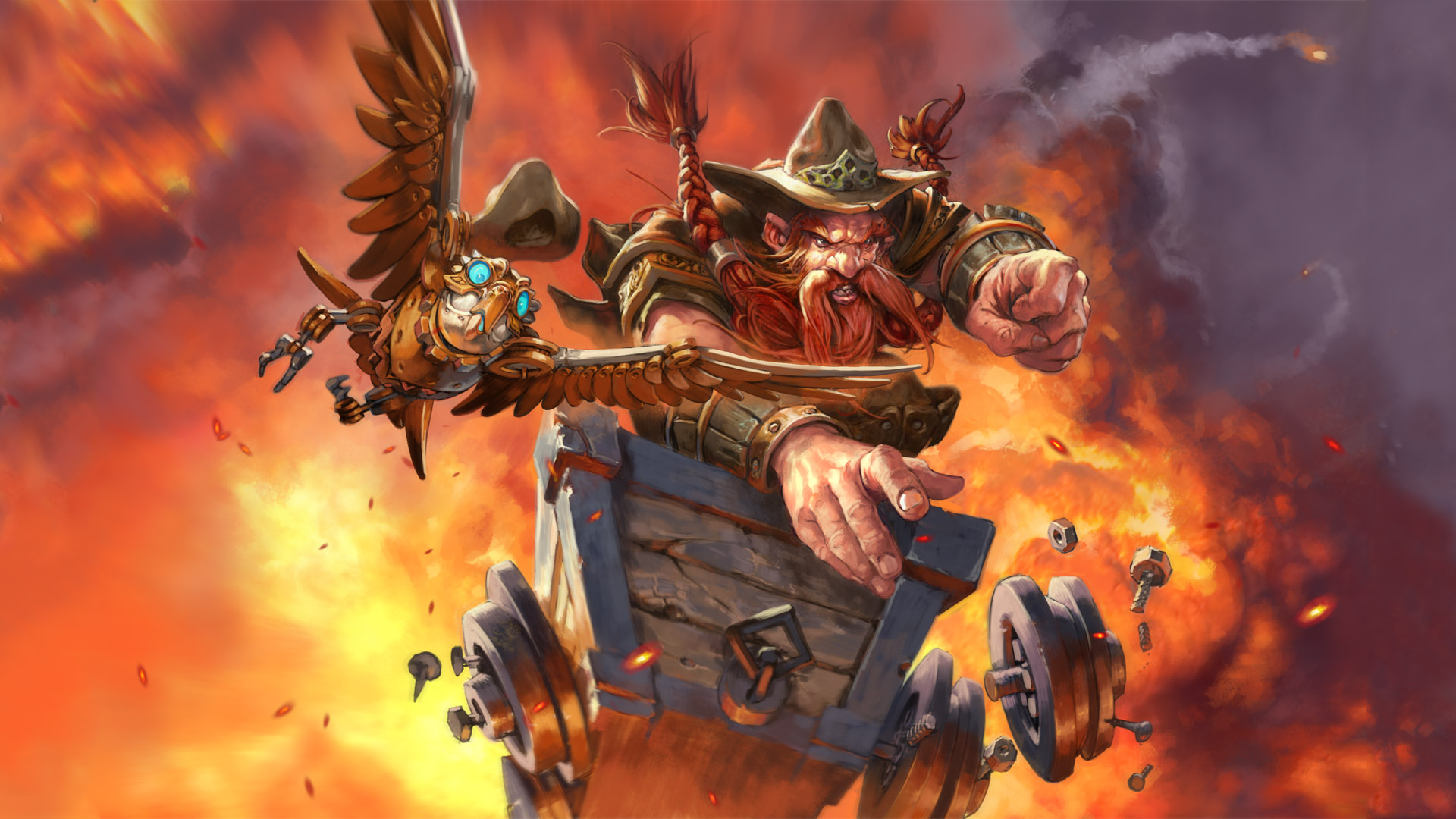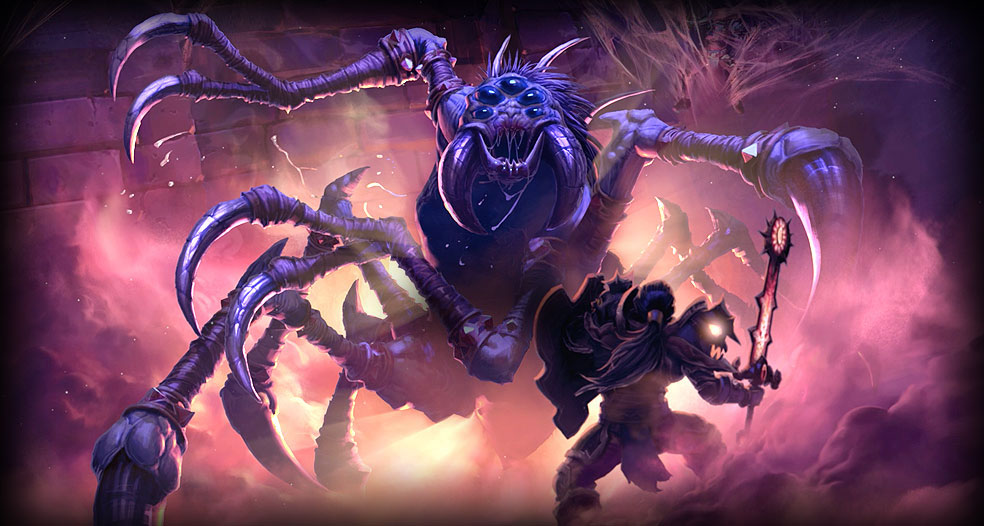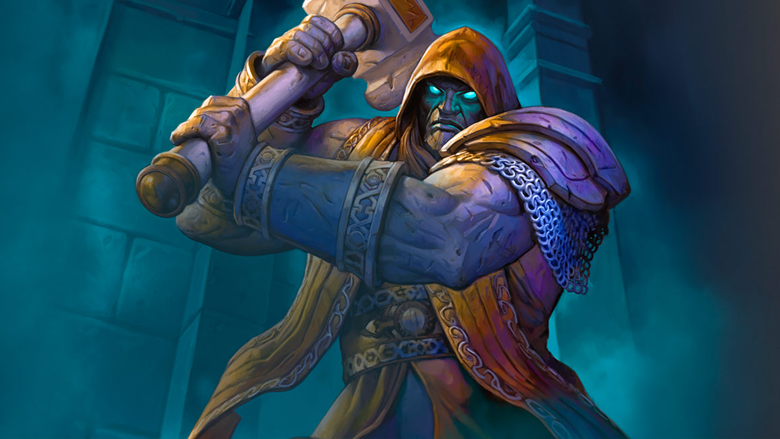On February 2, Blizzard announced the introduction of two game formats to Hearthstone. The players met the news ambiguously. We tried to figure out what made the American company take unpopular measures.
The division into formats, which will appear in the game in the second quarter of this year, comes down primarily to maps.
With a certain frequency, Blizzard releases sets with new cards for the game. Sometimes they come out together with a themed “Adventure” (single campaign), sometimes without.
Previously, there were no restrictions on the use of cards purchased or received in the “Adventure” mode. Users could buy at least all the cards that came out, make a deck based on them at their discretion and start fighting with other players.
In the near future, the rules will become a little more complicated.
Those players who want to play in the main Hearthstone mode, which is called “The Game” and is reduced to PvP for ranks and a place in the monthly top, should only use:
- cards from the base set (these are the ones that the player can earn in training, bringing each hero to level 10);
- cards from the classic set (chronologically the first purchased set for Hearthstone);
- and, most importantly (!), cards from additional sets issued before last year (that is, for example, at the beginning of 2017, all sets until January 2016 are banned).
In most other modes, the “Free” format will work. In fact, this is the current format with no restrictions on the use of sets.
It would seem, what can users be dissatisfied with?
The first problem. With the release of new sets, the old ones (the ones released before last year) along with the old single campaigns (adventures) will be withdrawn from sale.
And the English-speaking audience of the game criticizes the company for this.
“People will consider themselves “excommunicated” from certain parts of the game just because they were late to the party. This can lead to the fact that they will quit the game without getting stuck in it,” the Clonegunner player believes.
“I consider the removal of old content from the store to be absolutely dishonest,” the user Angrond echoes him.
“I really enjoyed playing in “[Curse] Naxxramasa”. It will be a shame if new players will not be able to play it,” explains his dissatisfaction in the comments of Gatelife.
The second point, to which claims are often made, is that the “Game” (the mode in which old cards will be banned) is the most popular type of game, and the struggle within it for monthly ranks (the more wins, the higher the rank) is one of the most important pleasures of Hearthstone.
Those players who have been creating an ideal deck for themselves over the past years have found themselves in the position of a baby who has had a candy pulled out. They were faced with the need to regularly update the deck if they want to continue playing the most popular mode.
“Thank you Blizzard. It was a good game,” – this is how the Russian-language comment thread opens under the news about the changes.
“Only the old [cards] will be taken away from you and forced to donate to the new ones as soon as you have collected the deck. HOP! Meta has changed, donating to new ones, old ones can no longer be used,” the innei player expresses dissatisfaction in the feed.
KaIzEr agrees with him: “As soon as a beginner accumulates by the end of the year on the cards of an existing add-on, they will tell him: the year of Schekel has come, you tried in vain, you donated in vain, now these cards are worth nothing, you can play them in segregation in wild mode, where there is no balance, which the developers forgot about. Give us new addons to please ourselves.”
So why did Blizzard take such drastic measures, which are difficult to call unambiguous?
Ben Brody, the lead designer of Hearthstone, explained the innovation in his video message for two reasons.
Firstly, it becomes more and more difficult for new players to master the game with each addition. There are too many cards, too many strategies, ways that make beginners feel like they need to collect all the released cards for a full-fledged game.
One of our experts revealed this thesis in more detail: “Two years after the release of the game, the old players began to get too much advantage over the new ones, which prevented [the latter] from entering the game [the “fathers” had decks of cards collected in two years, the newcomers did not]. Moreover, it has become trite for new players to study the game: there are too many maps in the game, too many mechanics, where to go, what to do, where to start? The casual player will not study forums.”
Alek Nezin, a leading analyst at SuperData, also told GamesBeat about this: “To participate in [PvP] competitions, new players will now need to know the last three or four sets at most, and not know about all the cards released for Hearthstone.”
The second reason for the introduction of new formats, the leading designer of Hearthstone called the fact that previously created maps compete with constantly emerging new ones, which makes it increasingly difficult for developers to change the meta-game by releasing new content.
An additional confirmation of the latter can be the data of The Daily Dot, according to which, of the 132 cards of the penultimate addition “Big Tournament”, only 13 are regularly used in PvP.
In other words, without incentives to use new sets, Blizzard actually finds itself in a trap.
PlayFlock designer Pavel Zazhmitsky also speaks about this: “The metagame has stagnated. Users use the same soundboards. There was an urgent need to do something about this, because in such games, if there is no incentive for constant “deckbuilding”, this is bad, because people concentrate on the same cards, interest in games disappears.”
But he also notes another important point: “Blizzard needs to withdraw from the game the cool cards that were released earlier, which forced new cards to be even cooler [and essentially unbalanced].”
“Plus, rotation always allows you to get money from players in a systematic way,” Zazhmitsky concludes.
Sergey Kopov, the head of the publishing department of Herocraft, exhaustively reveals the problems: “The chicken, as long as it is alive, should continue to lay golden eggs: sets of new cards should be released regularly. A large number of them causes two critical problems. Firstly, it increases the entry threshold for new players. Secondly, such a volume of cards is very difficult to balance, while maintaining the interest of the players. Format separation is a reliable solution. Now developers need to think about the balance of only new cards. And only new cards are needed for beginners to become competitive in the game. Of course, this approach is not without drawbacks, but no one has yet come up with a decent alternative. The long history of MTG’s existence confirms its viability, and Blizzard did not reinvent the wheel.”
Our expert also says that the new approach partly repeats the experience of the board collectible game Magic The Gathering.
“Hearthstone has come to the very moment that MTG once began to strangle: the excess of cards began to scare away new players with a large number of options […] The introduction of the “Standard” mode will help to separate fathers from noobs, by artificially reducing the available deck variations. Well, that is, as in MTG – only “fresh sets” are considered suitable.”
This is also understood by some of the players arguing on the pages of the Blizzard website with critics of the innovation: “Magic: The Gathering has had [the format] Legacy (free) and Type 2 (standard) for 20 years.”
Of course, the developers could have gone the other way, the way they went earlier, namely, constantly “nerfing” old maps. This would lead to a permanent rebalance, which would be inconvenient for both the development team and the players. But this would only complicate the project, and, as our expert notes, “they had to leave an element of casualness in the game, which rapidly turned into hardcore.”
The introduction of formats removed most of the problems. That is:
- solved the problem of entering the game for new players;
- solved the problem of meta development and retained the need to buy new sets of cards;
- solved the balance problem.
And what do you think about the innovation?
The author thanks Kirill Kataev and Alexander Pashin for their help in writing the material




